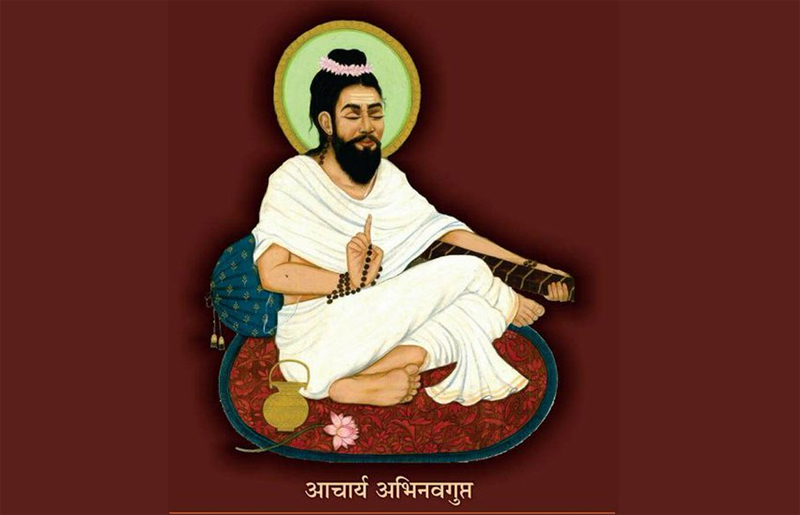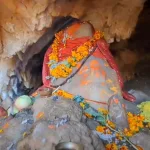Kashmir has been a melting pot of diverse schools of knowledge, where philosophy, grammar, literature, dance, drama, and other aesthetic pursuits emerged, leaving an everlasting impression on the Indian subcontinent. This knowledge-based society, with Sharda—the Goddess of Knowledge—as its presiding deity, made Kashmir a distinct crucible for learning and education. In this land, great scholars such as Udbhatt, Vaman, Rudratt, Bhatta Lollat, Bhatta Shankuk, Anandvardhan, Vasugupta, Somanand, Utpaldev, Bhatta Narayan, Bhatta Totuk, Bhatenduraj, Mammat, Kshemendra, Jayratha, Kshemraja, and Sharnagdev evolved and presented their work for future generations to deliberate upon.
In this beautiful valley, a line of masters evolved over time, laying the foundation for wisdom seekers and philosophers who dived deep to unravel the nature of existence and evolution. Among them, around the 11th century, a great polymath named Abhinavagupta emerged. With his sharp intellect and inquisitive mind, he distilled philosophy, polished the concept of Rasas, and synthesized philosophical streams in a manner that connected all phenomenal existence to Supreme Shiva, upon whom universal existence hinges.
Abhinavagupta continued with intellectual tradition of thinkers of Kashmir and touched all spheres of life which includes, “aesthetic experience, tantric praxis and universal consciousness.” It was the encyclopaedic genius of Abhinavagupta which endeared him from Kashmir to Kanyakumari. He was an exponent of Trika philosophy, theory of art and literature, poetics, nature of sound, etc. We may refer him the greatest jewel of ancient India who glorified Kashmir immensely. There are about almost forty four different works which he had authored, though many have been lost due to upheaval in Kashmir, but whatever is available to us is so profound and scholarly that even after thousand year we are unable to fathom the genius of this super human being. Many scholars have referred to him as an incarnation of Dakshnamurthy-Shiva and some refer to him as Sheshnaga. By whichever name we may refer him, we are simply awe struck by his genius expositions, clarity of thought, depth of understanding, approach to natural laws and above all his methodology of convincing arguments with facts and logic.
Early life
Abhinavagupta’s mother, Vimala, and his father, Narsimhagupta, who was also his guru, deeply influenced him. The early death of his mother led young Abhinava to become more reflective and sparked his interest in metaphysics. During his lifetime, Abhinavagupta learned from various masters, becoming the dearest disciple of all those with whom he studied. He emphasized the importance of learning from multiple gurus to enhance one’s wisdom. He wrote,
“It is only the black bee and not the honey bee which has the enormous appetite for the fragrance of the Ketaki flower. Similarly, only those rare people who are guided from within by the grace of Siva, find interest in absolute non-dualistic worship of Bhairava the One perfect whole of everything.” (Abhinavagupta, TA, IV, 276)
Abhinavagupta and Non-Dualism
Among Abhinavagupta’s various works, his ‘magnum opus’ Tantraloka stands out. It explains his rationale of the unity of human beings, sentient and insentient objects, and the highest reality, Param Shiva, all bound together. Abhinavagupta referred to this connection as non-dualism (Advaita) and explained that the phenomenal world is an extension of Consciousness that can appear in diverse forms by its own free (Swatantra) nature. According to him, reality is one, and because of its blissful nature (Anugreh), it creates a universe of diverse forms.
Abhinavagupta viewed the existing phenomenon as the outward manifestation of the Absolute Param Shiva, whose nature is pure, blissful, independent, and playful, involving Creation, Preservation, Absorption, Obscuration, and Revelation. He emphasized that one must feel the presence of the Supreme to rise above mundane existence and merge with the Divine being. He stated,
“There within the cosmic spheres, the universe resides, a series of worlds, organs and various bodies. It is there that Shiva Himself becomes a patient with a body, clothed in the condition of the individual soul.” (AG, Parmarthsar 2)
Works of Abhinavagupta
There are about two hundred forty-eight manuscripts of Abhinavagupta’s work in various libraries of India. The thirty-seven chapters of Tantraloka are among the greatest Sanskrit works in terms of content and poetic expression. Some important works of Abhinavagupta include:
- Bimba-pratibimbavada, etc.
To understand various schools of esoteric theories and practices, one needs to study Abhinavagupta. His intricate understanding of human evolution and the human mind sets him apart from other scholars of his time. His fame spread to various parts of South Asia, attracting learners who travelled to Kashmir to study under him.
Integration of Shaivite Schools
Since ancient times, Kashmir fully embraced various distinctive branches of Shaivism, including the Pratyabhijna, Spanda, Krama, and Kaula schools, collectively referred to as Trika or Kashmir Shaivism. Abhinavagupta synthesized and integrated these schools under a single entity, reducing friction and future discord. He explained that although these schools had different esoteric practices, their goal was the same: to achieve Supreme Consciousness, which he referred to as Anuttara or Samvit. This integration united society both in philosophy and practice.
Abhinavagupta simplified difficult philosophical and esoteric expositions, making them accessible to seekers and scholars. This simplification was due to his own experience, learning, and practice, enabling him to present them in a simple manner to learners.
Abhinavagupta’s Kashmir
The emergence of a genius like Abhinavagupta was possible only in Kashmir, where scholarship and merit were the only criteria for excellence. He wrote about his countrymen with glowing tribute,
“Where everybody is a learned person, where even a warrior is capable of worthy discourses, where women of the cities are remarkable with lustre of the moon and charming gait, where the band of yoginis (female adepts in tantric practice), just like the clear sky, are remarkable, having got the sun and the moon (prana and apana or ida and pingala symbolized) eclipsed, with their opening of the infinite path of sushumna blazing like the burning charcoal.”
Abhinavagupta loved Kashmir and treated the valley as a divine place, stating, “Where, here and there the sages make their dwelling, where in every place resides Siva himself, except such a place as Kashmir, I feel, for the fulfilment of all wishes and for the achievement of the perfect spiritual realization, there is no other place in the world.”
Remembering Abhinavagupta
Abhinavagupta is a valued heritage of mankind, known to the world as a man of the millennium. Indians, particularly Kashmiris, take pride in this great multifaceted polymath. His teachings and philosophy, although esoteric and subtle, deserve dedicated study and resources for learning. On his birth Jayanti, which was celebrated on June 18– Nirjala Ekadashi, universities across the globe organized special webinars and paper presentations to commemorate his Jayanti.
Let the light of the supreme master remove the darkness of ignorance and transform our lives with wisdom and knowledge, leading to holistic self-development and spiritual solace amidst the material world.
(Author is columnist)








